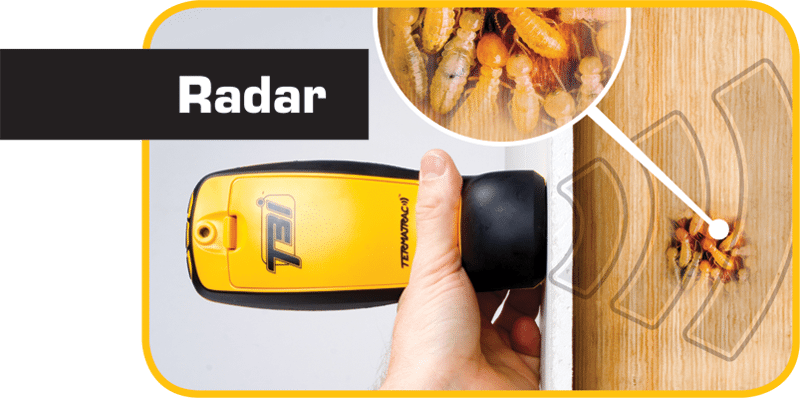0402 475 540
CALL US NOW
EMAIL US NOW
admin@bpts.com.au
CALL US NOW
admin@bpts.com.au
Commercial pest management refers to the practice of controlling and preventing pest infestations in commercial or industrial settings, such as office buildings, warehouses, restaurants, hospitals, and schools. This is typically carried out by professional pest management companies, who employ a range of methods and techniques to prevent, eliminate, and monitor pests.
Commercial pest management typically involves a multi-step process that includes inspection, identification, treatment, and monitoring. The first step is to conduct a thorough inspection of the premises to identify any existing pest problems or potential areas of infestation. Once the pests have been identified, the pest management company will develop a customized treatment plan, which may include the use of pesticides, baits, traps, or other methods, depending on the type of pest and the severity of the infestation.
In addition to treatment, ongoing monitoring and prevention are key components of commercial pest management. This may include regular inspections and maintenance, the use of pest-resistant building materials and landscaping, and employee education and training to prevent pest infestations from occurring in the first place.
Overall, commercial pest management is an essential practice for maintaining a healthy and safe environment in commercial and industrial settings. Effective pest management can help prevent damage to property, protect the health and safety of employees and customers, and ensure compliance with health and safety regulations.

Termite inspections are a type of inspection that is performed to identify the presence of termites or other wood-destroying insects in a property. Termites are known for their ability to cause significant damage to homes and other wooden structures, and early detection and treatment are crucial to prevent expensive damage.
During a termite inspection, a trained professional will examine the interior and exterior of a property, including the foundation, crawl spaces, and attic, looking for signs of termite activity. These signs may include mud tubes, damaged or hollow-sounding wood, discarded wings, and termite droppings.
If termites or other wood-destroying insects are found, the inspector will recommend appropriate treatment options, which may include chemical treatments, bait systems, or physical barriers. In some cases, repairs may also be necessary to address damage caused by the insects.
It’s important to have regular termite inspections, especially in areas where termites are prevalent. Homeowners should also take steps to prevent termite infestations, such as keeping woodpiles away from the home, fixing leaky pipes, and ensuring proper ventilation in crawl spaces and attics.


We work alongside the Body Corporate Committee and the onsite manager to bring an economical solution to community pest management. We have a growing list of Strata communities that have engaged our services for a multifaceted approach to pest management in all types of strata communities. We encourage all residents to get involved in the engagement of an Individual Pest Management Plan for their community as no two sites are the same. We approach this through investigation of the site, research of the surrounding environment and how that may impact our pest management plan. Similar to herd immunisation, if a substantial number of residents embrace the pest management plan by having the residences serviced on an annual basis alongside the annual pest manangement of the common areas, this gives a very good level of cover for the whole site.
Body corporate pest management refers to the collective efforts of a group of property owners or tenants to control and prevent pest infestations in shared spaces such as common areas, gardens, and exteriors of buildings. Here are some key considerations for effective body corporate pest management:
Conduct regular inspections: Regular inspections of shared areas can help identify pest infestations early, before they become larger problems. Inspections can be carried out by building managers, pest control professionals, or even individual residents.
Develop a pest management plan: Develop a pest management plan that outlines the specific pests that are common in the area and the strategies that will be used to control them. The plan should also include a schedule for regular inspections and treatments.
Educate residents: Educating residents about pest prevention and control can be an effective way to prevent infestations. This can include providing information about proper food storage, waste disposal, and other preventative measures.
Work with a professional pest control company: A professional pest control company can provide valuable expertise and resources for effective pest management. They can also help identify potential pest entry points and recommend strategies to prevent future infestations.
Use environmentally-friendly pest control methods: Consider using environmentally-friendly pest control methods, such as traps and bait stations, as an alternative to chemical treatments. This can help reduce the impact on the environment and the health of residents.
Maintain shared spaces: Regular maintenance of shared spaces, such as gardens and landscaping, can help reduce the risk of pest infestations by removing potential hiding places and food sources for pests.
Overall, effective body corporate pest management requires a collaborative effort between building managers, residents, and pest control professionals. Regular inspections, preventative measures, and proactive pest control strategies can help keep shared spaces free from pests and create a healthier living environment for everyone.
Residential pest management refers to the practice of controlling and preventing pests from infesting homes and other residential properties. Pests can include insects, rodents, and other wildlife that can cause damage to property, transmit diseases, and pose a threat to human health.
The following are some effective strategies for residential pest management:
Prevention: The best way to manage pests in a residential setting is to prevent them from entering in the first place. This can be done by sealing cracks and gaps around doors and windows, repairing screens, and ensuring that garbage and food waste is properly disposed of.
Sanitation: Good sanitation practices can help prevent pest infestations by removing sources of food and water that pests need to survive. This can include regularly cleaning and organizing storage areas, keeping trash in sealed containers, and promptly cleaning up spills and crumbs.
Monitoring: Regular monitoring can help detect pest problems early, allowing for prompt and effective intervention. This can involve setting up traps, monitoring activity around potential entry points, and conducting regular inspections.
Control methods: There are a variety of control methods that can be used to manage pest infestations, including insecticides, baits, traps, and physical barriers. The most effective method will depend on the type of pest and the severity of the infestation.
Professional assistance: In some cases, it may be necessary to seek the assistance of a professional pest control company. They can provide expert advice and implement effective pest management strategies to eliminate pests and prevent future infestations.
Overall, effective residential pest management requires a combination of prevention, sanitation, monitoring, and control strategies. By implementing these strategies, homeowners can protect their homes and families from the negative impacts of pest infestations.
Termite treatments and barriers are methods used to protect buildings and homes from termite infestations.
Termite treatments involve applying chemicals or bait to eliminate termites that are already present in the building or home. There are several types of termite treatments available, including liquid termiticides, termite baits, and foams. Liquid termiticides are usually applied to the soil around the building or home, while termite baits are placed in strategic locations to attract termites and kill them.
Termite barriers, on the other hand, are preventive measures that are put in place to prevent termites from entering the building or home in the first place. These barriers can be physical or chemical and are designed to create a barrier between the structure and the soil. Some common types of termite barriers include physical barriers like metal screens, gravel or crushed rock, and chemical barriers like liquid termiticides.
The type of treatment or barrier used will depend on the extent of the termite infestation and the specific needs of the building or home. It is important to consult with a professional pest control company to determine the most effective method of termite control for your property.
There are several rodent and bird deterrent measures that can be used for pest control. Here are some of the most effective methods:
Physical barriers: This involves using physical barriers such as wire mesh, netting, or spikes to prevent rodents and birds from accessing an area. This method is effective for outdoor areas like gardens, rooftops, and balconies.
Repellents: There are several types of repellents that can be used to deter rodents and birds, including scent-based repellents, sound-based repellents, and taste-based repellents. These can be used in both indoor and outdoor areas.
Traps: Traps can be used to capture and remove rodents and birds from an area. There are several types of traps, including snap traps, live traps, and glue traps.
Poison baits: Poison baits can be effective in controlling rodent populations, but they should be used with caution as they can be harmful to other animals and pets. They should only be used in areas where other control methods have failed.
Habitat modification: Modifying the environment to make it less attractive to rodents and birds can also be effective. This can include removing food sources, keeping garbage cans tightly sealed, and removing clutter that can provide hiding places for pests.
Scare devices: Scare devices like fake owls, snakes, and other predators can be effective in deterring birds and rodents. However, these devices are less effective over time as pests can become accustomed to them.
It’s important to note that the most effective pest control strategy often involves a combination of these methods. It’s also important to identify the specific type of pest you are dealing with to determine the best control method.





Copyright © 2023 Brisbane Pest & Termite Solutions- All Rights Reserved
Opening Hours:
Monday – Friday 8am – 5pm
Phone: 0402 475 540
Email: admin@bpts.com.au
Address: PO Box 12 Petrie QLD 4502